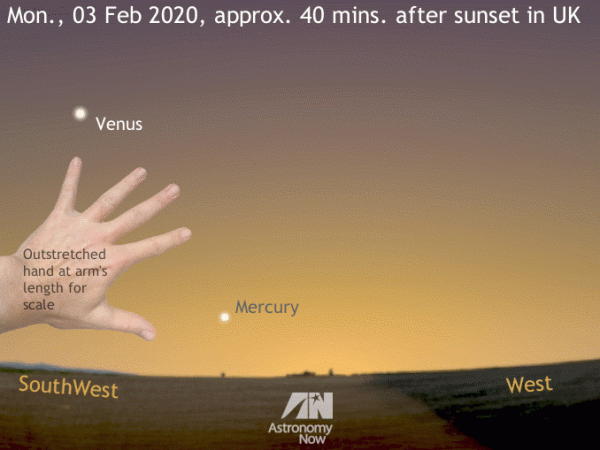Let Venus be your guide to Mercury at its best in February – Astronomy Now Online

As explained in an earlier observing story, Venus is currently hard to miss in the southwest at dusk. But did you realise that you can presently use the brightest planet as a convenient guide to locating Mercury, the swift and elusive little rocky world that lies closest to the Sun?
The innermost planet is poised to put on a fine evening show for Northern Hemisphere observers, attaining its greatest elongation 18.2 degrees east of the Sun in the constellation of Aquarius at 2pm GMT (14h UT) on Monday, 10 February 2020.
Planets Venus and Mercury maintain an almost constant angular separation for ten consecutive evenings starting 3 February, never getting closer than 23.6 degrees (which occurs in the small UK hours of 9 February), nor stray farther than 25 degrees apart.
From 3–13 February, observers in the UK should source a location that provides an unobstructed view of the west-southwest horizon about 40 minutes after sunset. Using dazzling Venus in Pisces as your starting point, look slightly more than the span of an outstretched hand at arm’s length to its lower right to find Mercury.
Mercury’s greatest easterly elongation this month occurs less than two days before the planet reaches perihelion, the closest point to the Sun in its orbit. Hence 18.2 degrees is close to the minimum value for an easterly elongation (there won’t be a smaller one – 18.1 degrees – until 19 February 2026).
The innermost planet starts the month at magnitude -1.0, but fades to magnitude zero by the 13th and magnitude +1 by the 17th, so you don’t want to miss any observing opportunities in the first half of the month. Mercury’s orbit carries it into the glare between Earth and the Sun (termed inferior conjunction) on 26 February.





